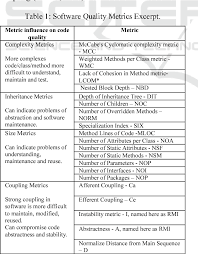Unlocking Success: Maximizing Efficiency with Software Development Metrics
Understanding the Importance of Software Development Metrics
Software development metrics play a crucial role in assessing the efficiency and effectiveness of a development team. By tracking and analyzing various metrics throughout the software development lifecycle, teams can identify areas for improvement, make informed decisions, and optimize their processes for better outcomes.
Key Software Development Metrics to Consider
**Code Churn**: This metric measures the rate at which code is being added, modified, or deleted in a project. High code churn may indicate instability or frequent changes in requirements.
**Lead Time**: Lead time refers to the time taken from when a task is started to when it is completed. Monitoring lead time helps teams identify bottlenecks and streamline their workflow.
**Defect Density**: Defect density measures the number of defects identified per unit of code. Tracking this metric helps teams assess code quality and prioritize bug fixes.
**Velocity**: Velocity measures the amount of work completed by a team in a specific timeframe, such as a sprint. It provides insights into team productivity and helps with future planning.
The Benefits of Using Software Development Metrics
By leveraging software development metrics effectively, teams can:
- Identify inefficiencies in their processes and address them promptly.
- Maintain visibility into project progress and make data-driven decisions.
- Predict potential issues before they escalate and take proactive measures to mitigate risks.
- Demonstrate performance improvements over time and showcase achievements to stakeholders.
Conclusion
In conclusion, software development metrics are valuable tools that enable teams to monitor their performance, optimize their processes, and deliver high-quality software efficiently. By tracking key metrics and analyzing trends over time, development teams can drive continuous improvement and achieve greater success in their projects.
5 Essential Tips for Effectively Using Software Development Metrics
- Define clear goals and objectives for choosing software development metrics.
- Select metrics that are relevant to the specific project or team to ensure they provide valuable insights.
- Regularly review and analyze the chosen metrics to track progress and identify areas for improvement.
- Avoid focusing solely on quantitative metrics; consider qualitative aspects for a more comprehensive evaluation.
- Communicate the significance of the selected metrics to all team members to foster understanding and alignment.
Define clear goals and objectives for choosing software development metrics.
When selecting software development metrics, it is essential to establish clear goals and objectives. Defining specific outcomes that the team aims to achieve through the use of metrics helps ensure that the chosen metrics align with the overarching objectives of the project. Clear goals provide a framework for selecting relevant metrics that will provide meaningful insights into the team’s performance and progress towards meeting project milestones. By setting clear goals and objectives upfront, teams can effectively track their success and make informed decisions based on the data derived from software development metrics.
Select metrics that are relevant to the specific project or team to ensure they provide valuable insights.
When it comes to software development metrics, it is essential to select metrics that are tailored to the specific project or team. By choosing metrics that are relevant and aligned with the goals and objectives of the project, teams can ensure that they provide valuable insights into performance and progress. This approach enables teams to focus on measuring aspects that truly matter in their context, leading to more meaningful analysis and informed decision-making throughout the software development lifecycle.
Regularly review and analyze the chosen metrics to track progress and identify areas for improvement.
Regularly reviewing and analyzing the selected software development metrics is essential for effectively tracking progress and pinpointing areas that require improvement. By consistently monitoring these metrics, development teams can gain valuable insights into their performance, identify trends, and make data-driven decisions to enhance their processes. This ongoing evaluation allows teams to adapt quickly to changing circumstances, optimize their workflow, and ultimately achieve better outcomes in their software development projects.
Avoid focusing solely on quantitative metrics; consider qualitative aspects for a more comprehensive evaluation.
When utilizing software development metrics, it is essential to avoid solely concentrating on quantitative data. While quantitative metrics offer valuable insights into productivity and performance, considering qualitative aspects is equally crucial for a comprehensive evaluation. Qualitative metrics such as user satisfaction, team morale, and code maintainability provide a deeper understanding of the overall quality and effectiveness of the development process. By incorporating both quantitative and qualitative metrics, teams can gain a more holistic view of their software development efforts and make well-informed decisions to drive continuous improvement.
Communicate the significance of the selected metrics to all team members to foster understanding and alignment.
Effective communication of the selected software development metrics to all team members is crucial to foster understanding and alignment within the team. By clearly explaining the significance of these metrics, team members can better grasp their importance in assessing performance and guiding decision-making. This shared understanding ensures that everyone is on the same page regarding goals, progress, and areas for improvement, ultimately leading to a more cohesive and collaborative development process.



